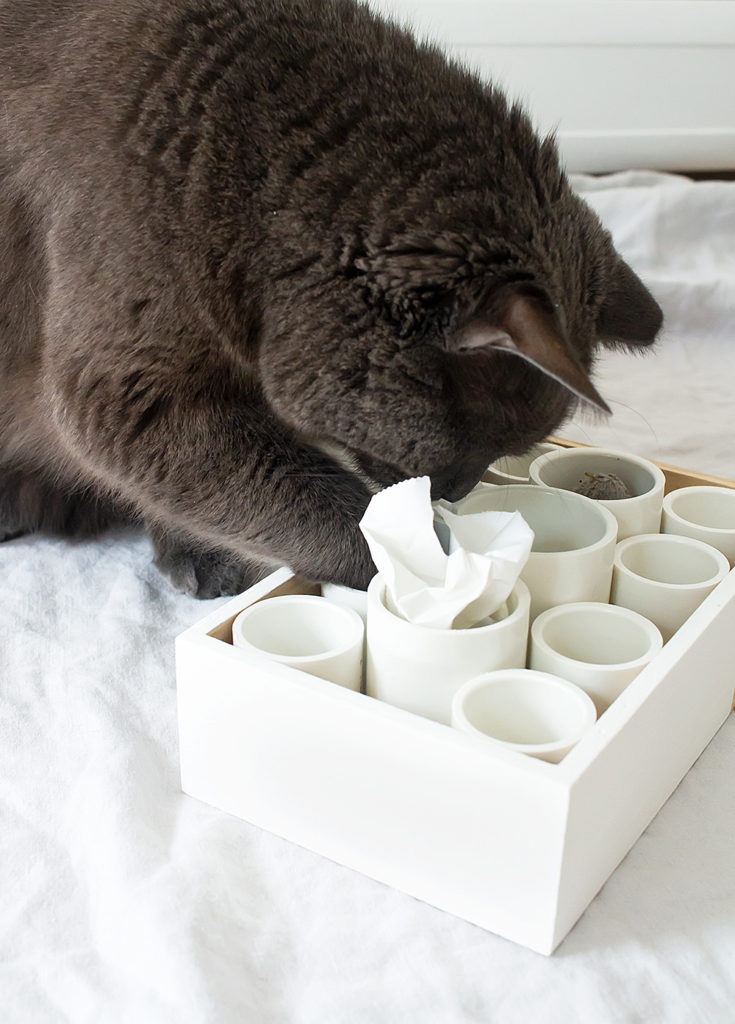Are you a cat lover who wants to show your feline friend an extra dose of TLC? A DIY cat puzzle game can be the perfect gift to keep your furry friend engaged, mentally stimulated, and physically active.
In the same way that a jigsaw puzzle is stimulating to humans, the food puzzle for adult cats and kittens is a great way to keep your cats stimulated.
It combines the excitement of a game with the allure of their favorite treats.
In this blog post, we’ll guide you through creating a cat food puzzle game using simple materials you can find around your home or at a local hardware store.
This DIY project is not only cost-effective but also allows you to tailor the puzzle to your cat’s specific needs and preferences. Because only you know what would be on your cat’s wish list.
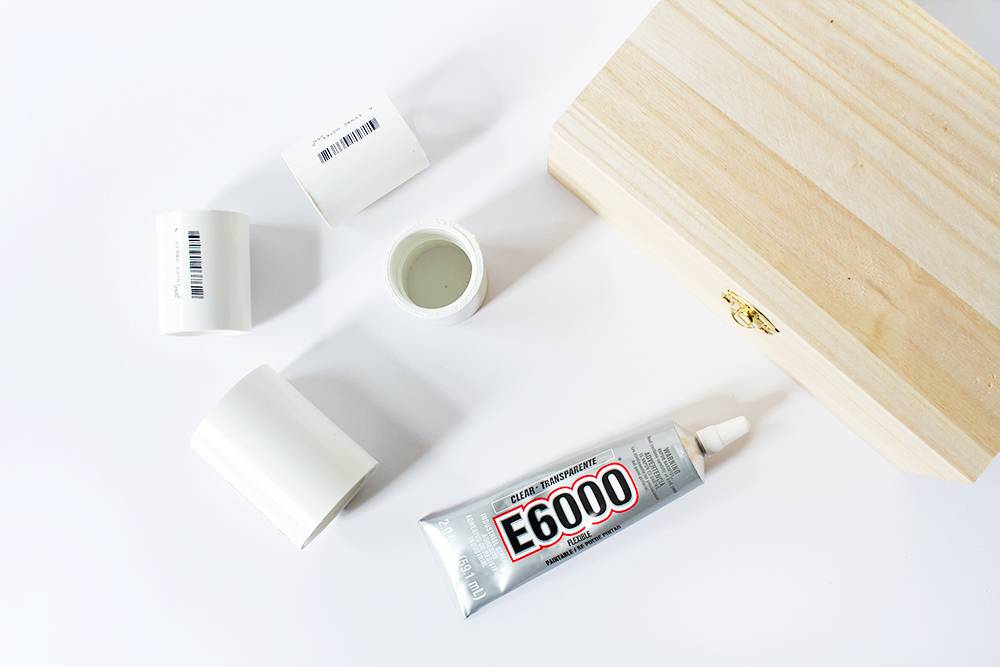
Choosing the Right Materials for Your Cat Food Puzzle
When creating a puzzle for cats, it is important to carefully select the materials to use.
Box For The Base
A vital component is the base. You can use a plain wood box, for a wooden jigsaw puzzle. Or a sturdy cardboard photo storage box can serve perfectly.
Each material has its benefits. Wood brings durability and longevity, whereas cardboard offers a lighter, more disposable option that can easily be replaced.
PVC Couplings
For the interactive elements of the puzzle, PVC pressure couplings in varied sizes are ideal. We used 1/2″, 1″, and 1 1/2″ for ours. But the size you use will be dependent on the puzzle size you are making.
These will form the heart of the puzzle, acting as obstacles and treat containers to engage your cat’s curiosity and problem-solving skills.
Adhesive
To assemble these parts into a cohesive and sturdy structure, a strong, clear adhesive, such as E6000 glue, is indispensable.
It ensures that the puzzle components are securely affixed, creating a durable and safe plaything for your feline companion.
Preparing the Box for Your Cat Food Puzzle
To begin, it’s crucial to get your chosen box, whether wood or cardboard, ready for the transformation into a cat food puzzle.
If opting for a wooden box, use sandpaper to smooth any rough areas to avoid the risk of your cat getting splinters during playtime.
In the case of a cardboard box, enhance its durability by reinforcing its corners and edges with extra pieces of cardboard or a robust tape to withstand the eager engagement of your cat.
Following this, give the box a comprehensive clean, inside and out. A meticulous cleaning removes all traces of dirt, dust, or oily residues, which is essential for the next steps. This preparation ensures a strong adhesive bond when attaching the puzzle pieces, setting the stage for a durable and engaging cat food puzzle.
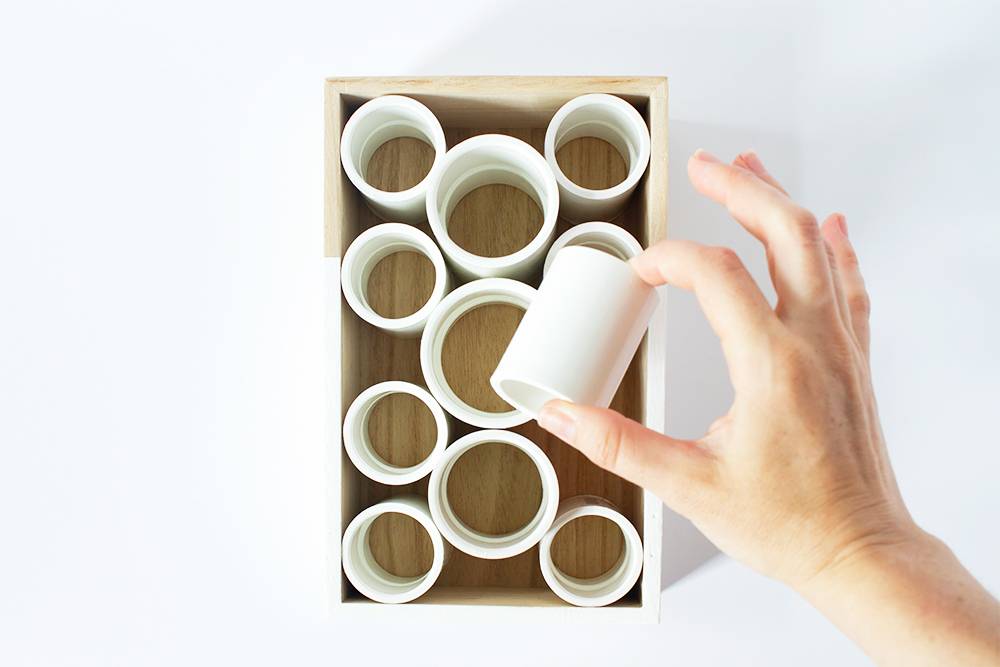
Arranging and Gluing the Couplings
Once your box is prepped and ready, it’s time to get creative with the PVC couplings.
Lay them out inside the box, trying various configurations to design a maze that will intrigue and challenge your cat.
Think about how your cat will interact with the puzzle, adjusting the layout to balance difficulty and accessibility.
After landing on a layout you like, dab a bit of E6000 glue on the bottom rim of each coupling.
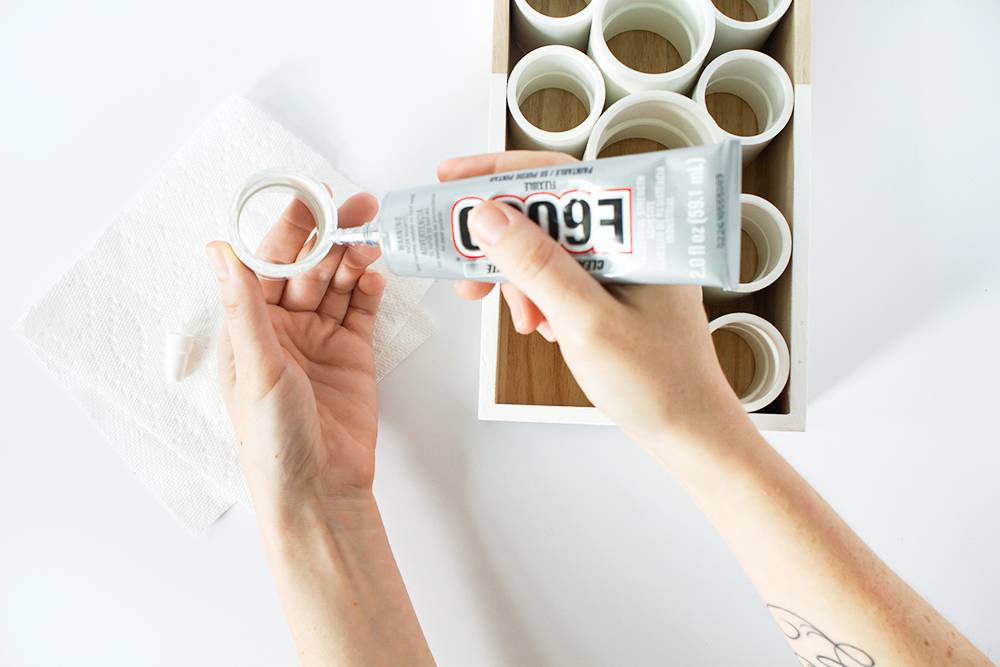
Position them back in their chosen spots, pressing firmly to secure a strong adherence to the box’s base.
It’s crucial to let the glue cure undisturbed, usually for about 24 hours, to ensure that the couplings won’t budge during play.
This step transforms your box into a bespoke cat food puzzle, tailored to stimulate your cat’s natural instincts and problem-solving abilities.
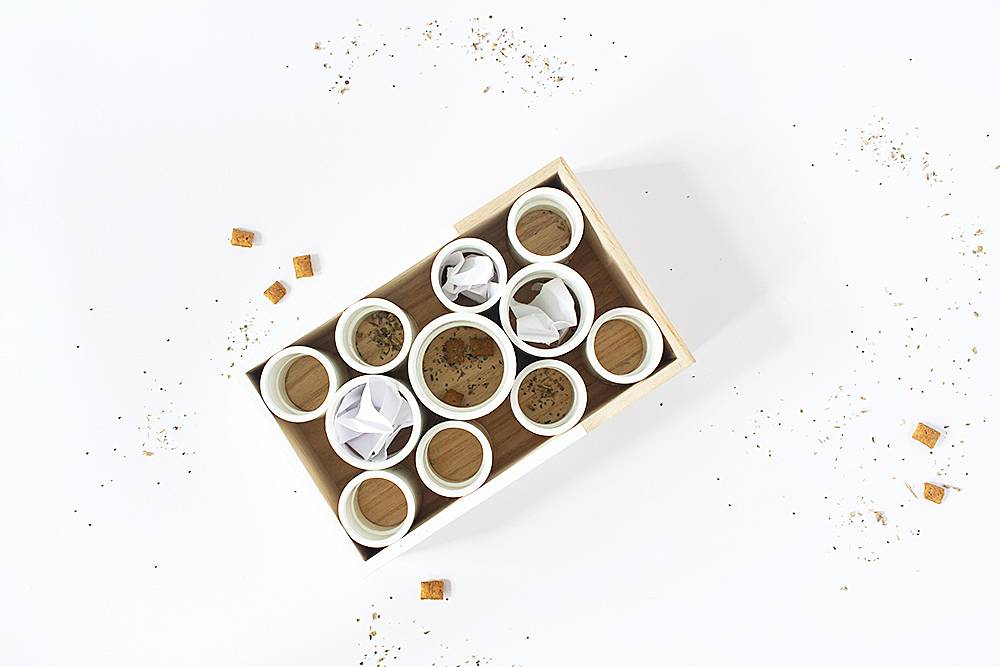
Finalizing Your Cat Food Puzzle
After allowing sufficient time for the adhesive to cure and confirming that the PVC couplings are securely fastened within the box, your cat food puzzle will be almost complete and ready to use.
For those utilizing a wooden box, applying a layer of clear, non-toxic sealant at this stage can offer additional protection against moisture and facilitate easier cleaning. It’s crucial to allow the sealant to dry completely before introducing the puzzle to your cat.
For creators opting for a cardboard base, ensure that the glue is entirely dry, and all components are firmly attached.
This step is essential in preventing any pieces from detaching during play, which could potentially become choking hazards.
With these final adjustments, your DIY cat food puzzle is now prepared for your cat’s exploration and enjoyment, promising countless hours of interactive play and mental stimulation.
Introducing the Cat Food Puzzle to Your Cat
Introducing your cat to the new food puzzle should be a gradual and patient process.
Begin by scattering a few of their favorite treats or kibble pieces in the easily accessible areas of the puzzle.
This initial step is crucial to spark their interest and encourage exploration.
Use gentle, positive tones to guide and motivate them as they start to interact with their new toy.
As your cat grows more confident and skilled at navigating the puzzle, you can heighten the challenge by strategically placing treats in the harder-to-reach spots within the puzzle.
This method helps maintain their interest and ensures the puzzle remains a stimulating and enjoyable activity.
Observing your cat’s interaction with the puzzle can also provide insights into their preferences and problem-solving strategies, allowing you to adjust the difficulty level for continued engagement and enrichment.
Safety Tips and Maintenance
To ensure that your homemade cat food puzzle lasts longer and remains safe for your furry friend, it is crucial to take necessary measures.
Conduct frequent checks of the puzzle for potential hazards, such as any parts becoming loose or signs of wear that could endanger your cat.
Promptly addressing these issues by either fixing or replacing the damaged parts is essential for your cat’s safety.
Maintaining the cleanliness of the puzzle is also crucial to prevent any health risks associated with leftover food particles or bacteria.
For puzzles crafted from wooden boxes, a simple wipe down with a damp cloth can keep the surface clean, especially if you’ve applied a non-toxic sealant.
Cardboard-based puzzles might not withstand wet cleaning, so it’s advisable to replace them as needed to maintain hygiene.
By following these maintenance and safety practices, you can ensure that your cat’s food puzzle remains a safe source of joy and stimulation.
This would be a great cat toy to make with your kids!
How To Make a DIY Cat Puzzle Game
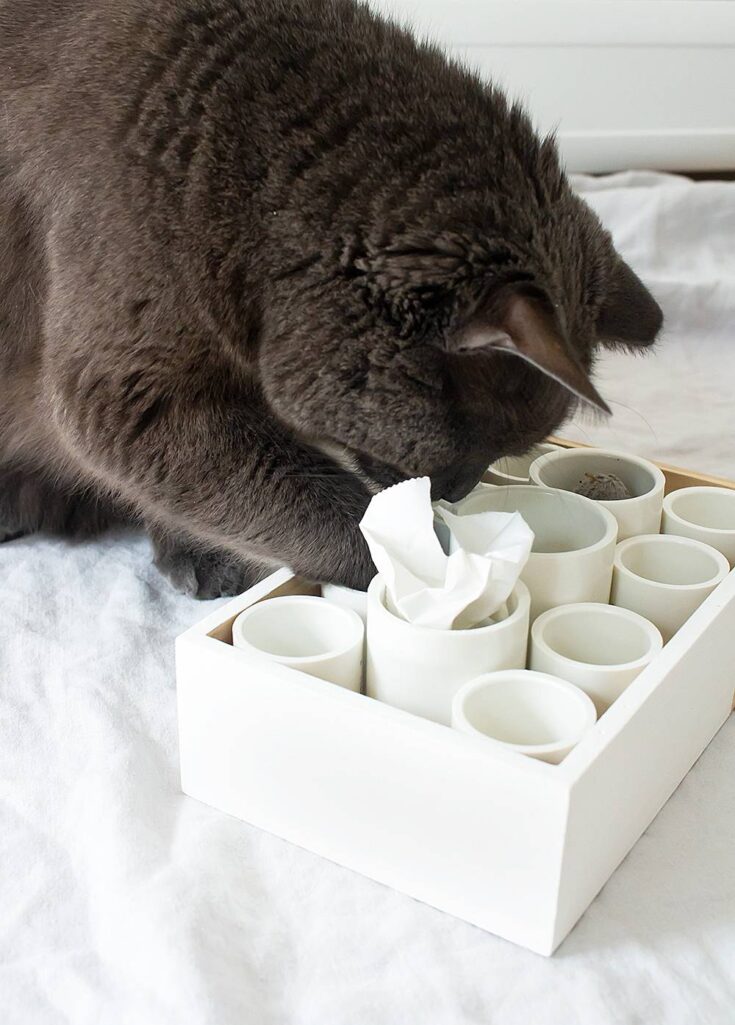
Instructions
- Prepare the box. Remove the box hardware, if it has any, and decorate the box (here, I kept things simple by painting half of the box white).Remove the box hardware if it has any, and decorate the box (here I kept things simple by painting half of the box white). Then, arrange all of the PVC couplings in the box. If couplings have text printed on them, you can hide it by turning the text so it’s facing another coupling.
- Glue the couplings. Add glue to the bottom of each coupling.
- Glue into place. That’s it! Once the box has dried, your cat will have a new puzzle feeder to challenge her hunting instincts.
